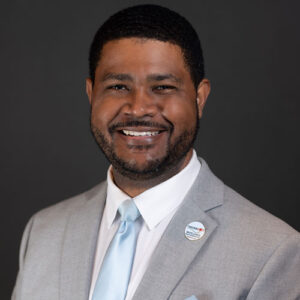Rausch: High-Quality Charter Schools Can Help Drive Student Recovery from COVID — If They’re Allowed to Grow and Expand

Help fund stories like this. Donate now!
As public education leaders and policymakers, we cannot spend or deregulate our way to strong achievement and wellness as students and communities recover from the COVID-19 pandemic. While additional resources, supports and policies are needed, they must be used to create and innovate our way toward a better future.
Yet, in that drive to innovate, it is important to remember that one of the most important public education innovations of the last 20 years is the emergence of excellent charter schools that provide high-quality education to hundreds of thousands of lower-income students and children of color. Schools that advance student learning and wellness, and close opportunity and achievement gaps, are no longer isolated phenomena; they exist all over the nation, and communities are rightly demanding more of them.
That’s why it’s a travesty when these schools have capacity for expansion but are prohibited by state policy or their authorizers for what appear to be bureaucratic and political reasons. Denying students access to a quality education is more than shameful; it’s educational malpractice, given just how critical excellent schools are to pandemic recovery efforts.
At the height of the pandemic, NACSA, in collaboration with the Charter School Growth Fund, exemplary school leaders and high-quality authorizers, released new evidence on effective policies and practices to encourage quality school replication and expansion. Here are some of those national best practices and others that were developed for charter schools and their authorizers. They can be applied by any school district or state leader interested in expanding quality as a part of recovery but are executed best by authorizers with the expertise to evaluate these nuanced and important decisions about school replication and expansion.
- Criteria must be transparent and rigorous. With accessible and clear criteria, high-quality schools seeking to serve more students will know whether they meet the standards for academic, financial and operational quality that are worthy of the students they educate and the taxpayer dollars they spend. Transparent and clear criteria promote evidence-based decisionmaking, free from political influence. This also allows communities, especially families and local advocates, to understand the criteria and be able to reshape it if it needs strengthening. In this way, communities can know that growth will expand excellence, not mediocrity or poor quality. It also ensures that growth criteria are not bureaucratic, unrealistic or mismatched to the students served.
- The process for deciding which schools or networks should be allowed to grow should not be burdensome or automatic. Even in high-quality schools, requests to expand should be reviewed by authorizers in order to determine sound planning and capacity to grow, particularly when a school is interested in starting a second campus or growing into a network. It’s also important to evaluate family need and demand, including things like the quality of schools in the area, parents’ interest in the proposed educational approach or waitlist information, to determine whether students will enroll in the school. Most importantly, authorizers should create and use a streamlined evaluation process for schools that already have a track record of performance. Authorizers should already know — and have made public — what that performance is in a range of categories. There is no need to ask for redundant information. Therefore, the decisionmaking timeline should be much shorter.
- Incentivize quality growth. Public schools must respond to what families need now, as the country emerges from the pandemic. Policymakers, authorizers and other school oversight officials need to be creative problem solvers who work with communities, not passive evaluators of proposals — or, worse, roadblocks that stymie the growth of new quality schools. It’s critical for policymakers to incentivize expanding access to vacant or underutilized facilities, removing artificial limits on charter growth and prioritizing equitable funding for all public schools. We have seen other innovative ways of encouraging quality growth, like utilizing federal Charter School Program flexibility to enable high-quality expansion, while also addressing barriers to access by funding one-time transportation startup costs; developing strategic partnerships between authorizers and local education and civic organizations to assist schools; reducing oversight fees for high-quality schools to enable additional school-level resources for growth planning; and allowing different oversight approaches for high- and low-performing schools, recognizing that low-performing schools require more attention.
- Expand authorizing with quality. If charter school authorizers end up getting stuck in political fights that prevent high-quality schools from growing, then states, cities and communities should consider other options. Every potential applicant should have access to more than one potential authorizer. Given the extraordinary, community-centered success of the Indianapolis mayor’s office — across multiple administrations of different political parties — state policymakers could consider incentivizing more mayors to become authorizers. Another potentially untapped resource could be public career and technical colleges and Historically Black Colleges and Universities, given their long history of connection and responsiveness to underresourced communities and those of color. Having too many authorizers, however, can create other issues — such as lower-performing schools seeking to avoid consequences by switching authorizers — that state policymakers must avoid. That’s why it is equally important to ensure that if additional authorizers are needed and added, states must adopt policies that require quality authorizing practices, prevent “authorizer shopping” and ensure new authorizers are structured for success.
As we innovate our way to a brighter future for children and families, state policymakers and community and education leaders should prioritize giving more students access to the very best schools. This is an effective and innovative strategy for recovery. Anything else is just politics or old debates and runs counter to student and family needs.
Karega Rausch is president and CEO of the National Association of Charter School Authorizers.
Help fund stories like this. Donate now!

;)
